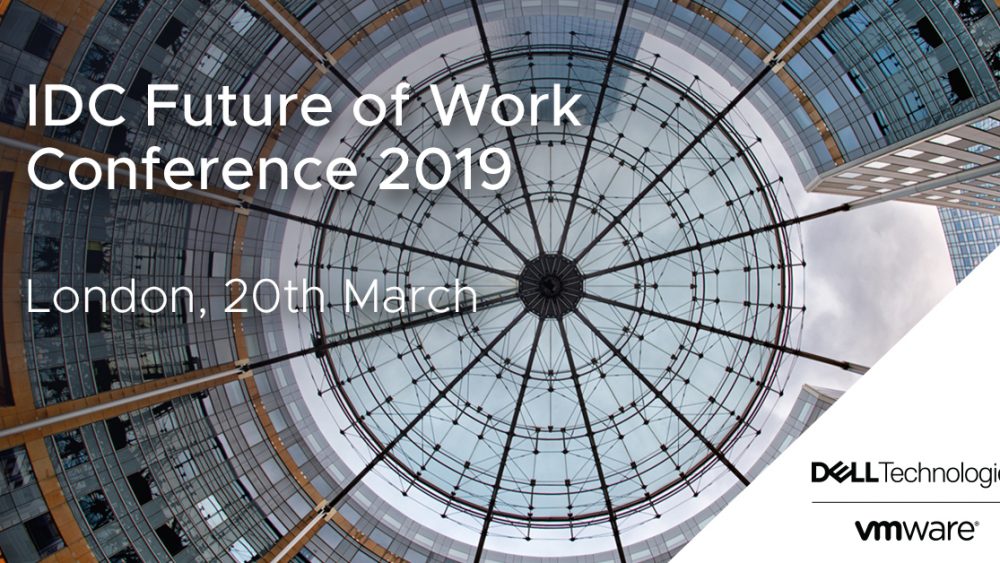Andy Philp, EMEA Solutions Marketing, VMware
Since a young age, many of us have been led to believe that things happen in three. The three little pigs, Goldilocks and the three bears, the three-ring circus you always wanted to go to.
While not folklore, there’s now the three pillars that underpin the foundation of digital success – culture, workspace and workforce. A new report from IDC: Becoming “Future of Work” Ready: Follow the leaders shines a new spotlight on these three pillars and why they are the driving force behind an organisations future.
When considered alone, each pillar will drive incremental change but only together will organisations truly achieve the desired impact of digital transformation. According to IDC, the Future of Work is a holistic journey that integrates these three pillars to achieve digital success. But we recognize this is not easy; and for that reason, few organisations have done this. In fact, the IDC research reveals only 30% of European organisations[1] have successfully established (but only a few implemented) a future of work strategy.
Let’s look at each pillar in more detail.
Culture
Work culture refers to the values of an organisation, including how leaders motivate and retain employees, while aligning to the company’s strategic goals. Businesses need to ensure employees and partners have access to the right tools to create a more agile and creative, and thus productive and happy, working environment.
The Future of Work is a growing organisational trend. It doesn’t just sit at the top of an organisation, but trickles down through the layers, requiring intimate collaboration between IT, Line of Business and HR leaders. This top down approach, when culture, strategy and operations are aligned, is vital to achieve real business results.
Skills is a big part of this but unfortunately three in four European companies1 are struggling to recruit the right talent. Regardless of age, employees are on the continual lookout for the best digital opportunities. Companies need to be mindful that brand and reputation is just as important from an internal perspective as it is to those on the outside. Actively tracking employee engagement and happiness and providing the opportunity for real-time feedback, can help to retain existing talent.
Workspace
The concept of a ‘9 to 5’ job is history. Employees don’t want to feel chained to their desks for seven hours a day but instead want the flexibility of being able to work when and where they feel most productive. These ‘digital natives’ are transforming working environments by mixing physical, digital and immersive technologies.
The result includes the emergence of ‘collaborative hubs’ and flexible working policies in the corporate world, along with voice enabled apps and Artificial Intelligence-driven tools on the shop floors of the retail sector. IDC believes that by 2021, 60% of G2000 companies (an annual ranking of the top 2,000 public companies in the world according to Forbes) will have adopted a future-workspace model — a flexible, intelligent, collaborative virtual/physical work environment — to improve employee experience and productivity.
However, security is always core to this. As more traditional working hours and policies become obsolete, ‘borderless organisations’ start to emerge which can cause concern for IT security teams. Past designs of security infrastructure are no longer relevant as new working environments result in back and forth data flows between multiple devices across the world. It’s no surprise that digital security is the #1 Future of Work initiative for organisations who have already implemented this type of strategy. Educating employees, regardless of their contract and position, on good security hygiene must be a top priority.
Workforce
The makeup and nature of the workforce is radically evolving. On the one hand, demographic shifts are impacting the size, age and diversity of the workforce; on the other hand, intelligent technologies are augmenting and automating work while creating new opportunities for value creation within organizations.
Intelligent technologies will provide new levels of productivity, accuracy and business intelligence. Adoption will drive business innovation, leading to competitive differentiation and disruption.
According to IDC, a third of organisations with a Future of Work strategy, believe that at least a quarter of their organisation will be actively using AI in their daily jobs in the next three years1.
The role of the Digital Workspace
There are many technologies that can be considered pivotal to digital transformation, but the Digital Workspace certainly stands out as the most empowering. Its platform architecture, management and security capabilities and experience centric approach are a good fit for the needs of the new world of work.
Digital Workspace platforms are multi-faceted and can help to retain great talent, become more agile and customer centric and improve workforce augmentation.
Implementing this way of thinking is not a simple process. It requires time and investment. Businesses will reap the rewards of a more user-centric experience across its customers, employees and business, by adopting this three-pillar approach.
For more information on how you can implement these three pillars into your organisation join us at IDC’s Future of Work event taking place on 20th March at 11 Cavendish Square, London. For more details visit the website.
[1] Source: IDC EMEA, Future of Work, November 2018
Category: News & Highlights


No comments yet